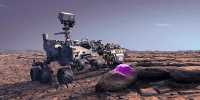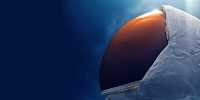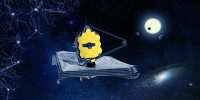As part of the agency’s Advanced Air Mobility (AAM) National Campaign, NASA began flight testing with Joby Aviation’s all-electric vertical takeoff and landing (eVTOL) aircraft. This testing will take place at Joby’s Electric Flight Base near Big Sur, California, until Friday, September 10. As part of the campaign, NASA will be testing an eVTOL aircraft for the first time. In the future, eVTOL aircraft could serve as air taxis for people and goods in cities and surrounding areas across the country, providing another mode of transportation for people and goods.
As part of its Advanced Air Mobility (AAM) National Campaign, the space agency is using the aircraft to collect performance and acoustic data to aid in the development of future airspace concepts. NASA also hopes to assist the Federal Aviation Administration (FAA) in identifying potential gaps in regulations and policies governing the use of air taxis in cities and other parts of the country — a critical step toward integrating flying taxis into the transportation future.
NASA’s goal is to collect vehicle performance and acoustic data for future airspace modeling and simulation. This test will aid in the identification of gaps in current Federal Aviation Administration regulations and policies that will aid in the integration of AAM aircraft into the National Airspace System. This multi-event campaign to advance airspace mobility in the United States will take place in a variety of locations over the course of several years.
NASA is officially starting to flight test an all-electric vertical take off and landing (eVTOL) aircraft built by California-based Joby Aviation, with the hopes of establishing an entirely new form of city-to-city transportation.
Quiet Take Off and Landing
A critical component of that effort will be determining whether air taxis will be too loud to blend in with the background noise — or will wake up entire city blocks when taking off. The space agency will use a network of more than 50 microphones to assess the sound of Joby’s eVTOL.
“From the beginning, we prioritized developing an aircraft that not only has an extremely low noise profile, but also blends seamlessly into the natural environment,” said JoeBen Bevirt, founder and CEO of Joby Aviation, in a statement. “We have always believed that a minimal acoustic footprint is critical to making aviation a convenient part of everyday movement without compromising quality of life, and we are excited to fly with NASA [to] demonstrate our aircraft’s acoustic profile.”

The plane has a range of 150 miles and a top speed of 200 miles per hour. Earlier flight testing videos appear to show the vehicle to be relatively quiet. Bevirt was able to express his excitement about the technology audibly in the video, while the aircraft took off not far behind him.
According to the statement, NASA hopes that its AAM program will also “provide an efficient and affordable system for passenger and cargo transportation,” and that it will include everything from package delivery drones to medical transport vehicles.
Joby says it has already completed more than 1,000 test flights and is aiming for full FAA certification as soon as 2023. Is this how air taxis will look — and sound — in the future? With the help of key regulatory partners, startups like Joby have the potential to usher in a future in which we can fly from city to city without being hampered by traffic or crowded airports — or, at the very least, the wealthy will be able to.
NASA will collect data from Joby’s eVTOL aircraft during this round of testing, which is intended to serve as a commercial passenger service in the future. Analyzing that data prepares the AAM National Campaign for the first set of campaign tests, known as NC-1, which are scheduled for 2022 and will include more complex flight scenarios and other industry vehicles. As the Joby aircraft flies through planned test scenarios, the NASA team will collect data on how the vehicle moves, sounds, and communicates with controllers. Future partners will fly similar scenarios to assess the readiness of their vehicles.
The team will set up the mobile acoustics facility and build an array of more than 50 microphones to measure the acoustic profile of Joby’s aircraft at various stages of flight. Another aspect of the testing is ensuring that the external ranges participating in NC-1 meet the protocols for future testing by establishing a baseline for participation. The team will also put NASA’s flight safety and airworthiness processes to the test in order to approve campaign participants to fly.
When fully integrated into the national airspace, AAM will provide an efficient and cost-effective system for passenger and cargo transportation, as well as other public-interest applications. Package delivery drones, air taxis, and medical transport vehicles could all be part of this system.















